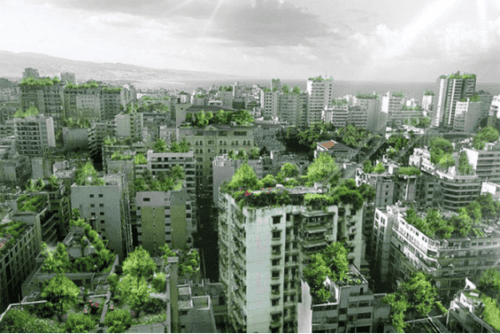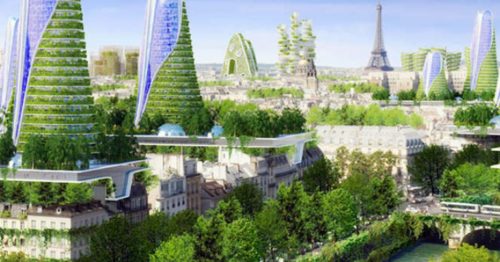Living Walls bring us closer to our natural roots. The advent of urbanization and the built environment is a new phenomenon dating back only a few millennia, and our genes are still catching up.
While our biology scrambles to adapt itself to this new (and polluted) artificial environment, urban centers have had an enormous and often negative impact on the Earth’s natural systems. Living Walls are a way of softening this impact, while bringing us closer to the natural world in which we evolved.

The mechanical regiments and artificial qualities of the urban landscape leave many of us feeling empty inside, stressed out and disconnected from a greater sense of purpose and belonging.
The depression and anxiety that many urbanites feel is driven in large part by the fracture between the urban environment and the natural world. We evolved to wander the Earth’s forests and mountain ranges, to live under an open sky and rise with the morning sun; the urban landscape of concrete shells and electric screens is at odds with our identity as living creatures in a diverse and interconnected biotic world.
Nevertheless, urbanization is a trend that is here to stay. In 2008, more than half the world’s population was urban, and this is expected to rise to 64% by 2050. For those of us interested in sustainability, climate change resiliency, resource efficiency, and the preservation of biodiversity (i.e. the general wellbeing of life on Earth), particular emphasis must be given to the urban environment: How we manage our cities will determine the future of humanity.

Living Walls are a critical component of future urban planning and design. They have been shown to decrease building energy consumption, reduce the urban heat island effect, and act as a sink for carbon emissions and other harmful air pollutants. When installed indoors, Living Walls improve air quality, reduce noise pollution, and inspire creativity and positive wellbeing in those who are around them.
It is no surprise that major companies like Amazon are investing in Living Walls to boost corporate productivity–people are healthier and happier when they are closer to nature!

As a dedicated Living Wall installer, Eco Brooklyn believes in pursuing a strategy of soft-adaptation: living in harmony within natural systems rather than trying to overcome them with hard technology (such as replacing bees with robotic drones after they have become extinct from our excessive use of pesticides).
We understand cities are the future. They reflect the ingenuity and aspirations of humankind—but if we want our species to continue to thrive on this small blue planet, we must transform our urban centers to move in harmony with the natural world and its many diverse inhabitants.
Living Walls are a small but important step down such a path.
